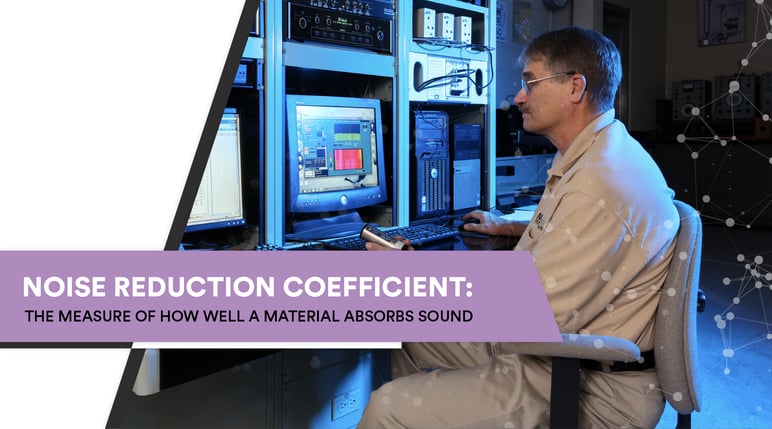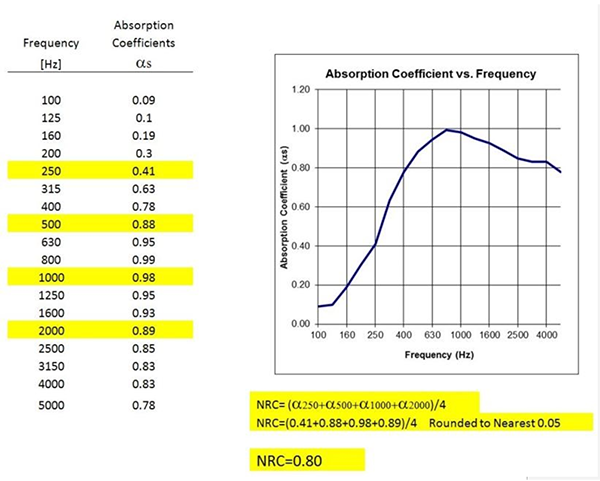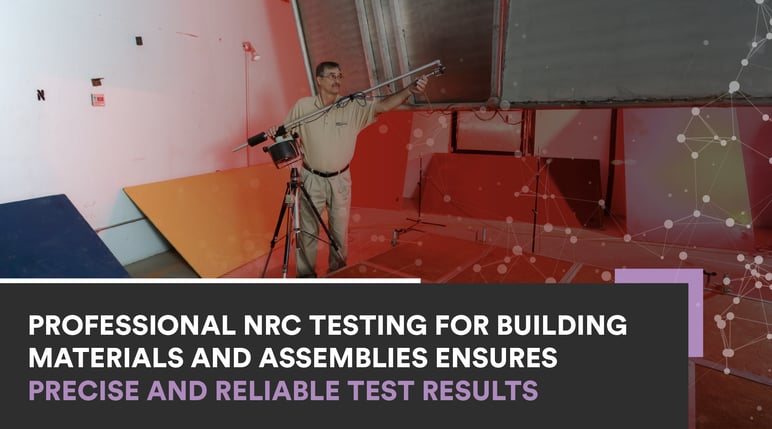Acoustical Testing
How Materials Absorb Sound: The Noise Reduction Coefficient
When sound interacts with any material, it can be either reflected, transmitted, or absorbed. Understanding how sound behaves is essential for designing spaces that meet specific acoustical requirements.
In this blog, we’ll examine sound absorption, highlighting its role in creating comfortable, functional, and compliant environments. Whether it's for improving communication, increasing productivity, or enhancing the overall experience, addressing acoustical challenges through effective sound absorption positively impacts the quality of life in different spaces.
What Is the Noise Reduction Coefficient?
Whenever exploring material sound absorption, it's crucial to discuss the noise reduction coefficient (NRC), which is the measure of how well a material absorbs sound.

ASTM International defines NRC as a single-number rating, the average, rounded to the nearest 0.05, of the sound absorption coefficients of material for the four 1/3-octave test frequency bands at 250, 500, 100, and 2000 Hz.
Noise Reduction Coefficient Testing Method
Sound absorption coefficients are measured according to Test Method ASTM C423. This entails measuring the time required for the sound field to decay 60 dB (decibels) in a reverberation room.
Using the Sabine Equation, the absorption of the reverberation room is measured both before and after placing a 72-square-foot sample in the room. The increase in absorption divided by the area of the sample is the dimensionless sound absorption coefficient.

The Sabine Equation proves there is a relationship between the quality of acoustics, the size of the chamber, and the amount of absorption surface present. Reverberation time is the most important characteristic to gauge the acoustical quality of a room.
The unit of measured absorption is the sabin, named in honor of American physicist Wallace Sabine (1868-1919). He developed the Sabine Equation and is considered "the father of architectural acoustics."
Factors Influencing Noise Reduction Coefficient Ratings
Several factors impact NRC ratings, and understanding these factors is essential for making informed decisions about acoustical design:
- Material Composition: Porous materials tend to have higher NRC ratings due to their ability to trap and absorb sound within their open structures. Higher-density materials also often exhibit better sound absorption.
- Surface Texture and Smoothness: Materials with irregular surfaces or textures, like fabric-covered panels, can scatter sound waves, contributing to effective sound absorption.
- Material Thickness: Thicker materials generally offer greater sound absorption across a broader frequency range.
- Frequency Range: NRC ratings are frequency-dependent, meaning they vary based on the range of sound frequencies.
- Backing and Mounting: The presence of backing materials or the method of mounting can influence sound absorption.
- Material Age and Wear: Over time, materials may experience wear and aging, potentially affecting their acoustic properties.
- Environmental Conditions: Even humidity and temperature can affect the acoustical properties of materials.
Understanding these factors allows designers, architects, and acoustic engineers to select materials that align with specific acoustical requirements.
Benefits of Professional Noise Reduction Coefficient Testing
Professional NRC testing for building materials and products ensures precise and reliable test results, helping to optimize acoustic performance in diverse settings.

This expertise enables the customization of acoustical solutions tailored to specific space needs, optimizing material selection and placement for enhanced sound absorption. Professional testing also contributes to the creation of long-lasting and effective acoustical designs, promoting occupant comfort and satisfaction.
Additionally, professional acoustical testing services for NRC are crucial for ensuring compliance with regulations and standards so that materials meet necessary criteria and legal requirements.
NGC Testing Services offers full-scale acoustical testing of various building materials and assemblies — with quick turnarounds and at an overall low cost. To learn more about our NRC testing, reach out to our team of experts today.
Editor's Note: This post was originally published in October 19, 2021 by Bob Menchetti and was updated and republished in April 2024.
Search blog articles
Browse by topic
Subscribe for updates
GET IN TOUCH
Contact Us
NGC Testing Services features one of North America's most comprehensive and unique fully accredited testing facilities. Contact us today to visit our 50,000-plus-square-foot facility located in Buffalo, New York.

